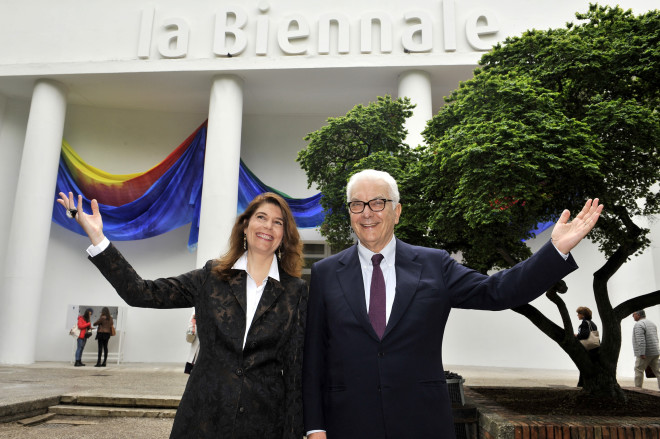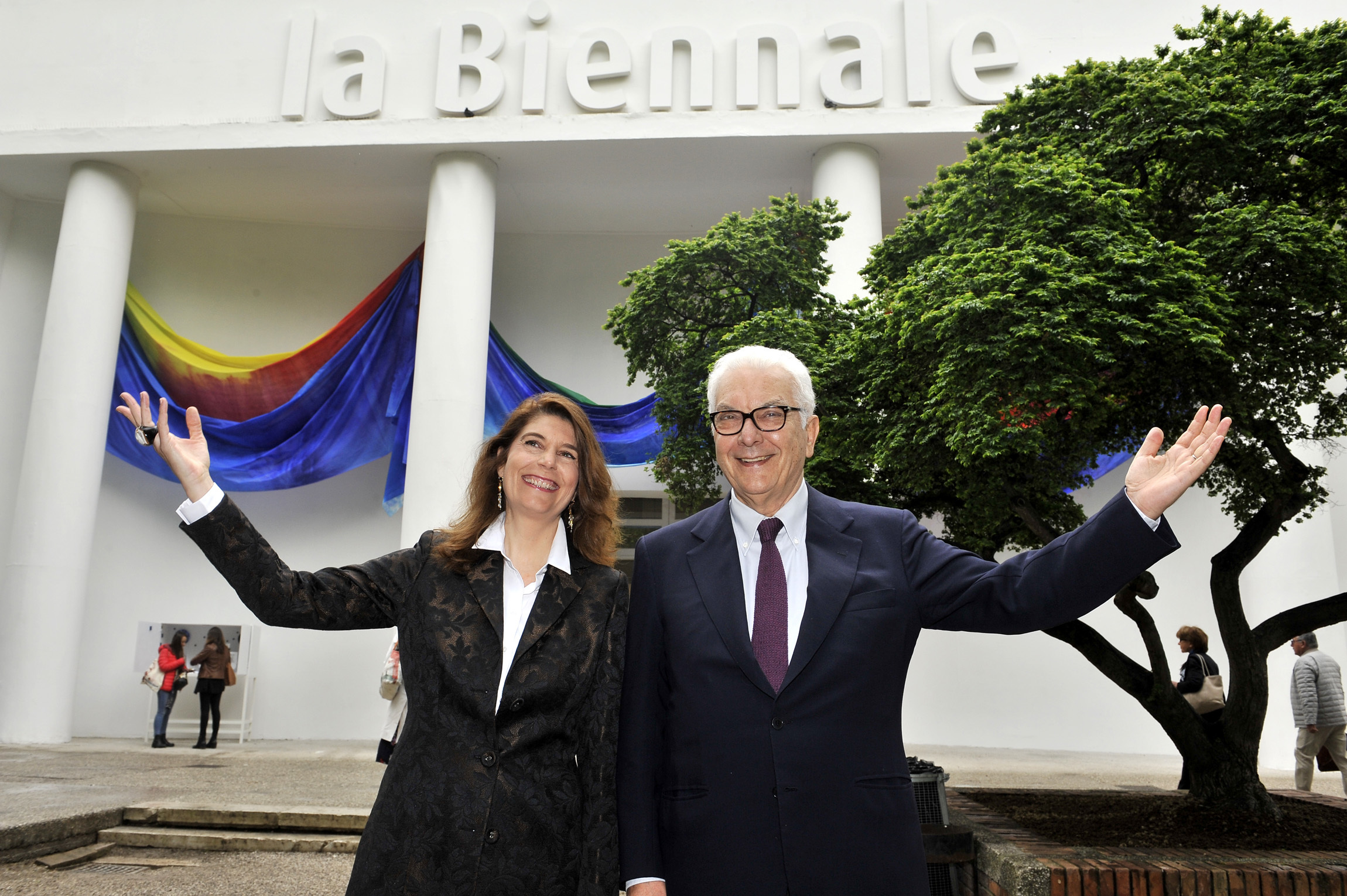
VENICE — With nationalism on the rise, political engagement is central to the artistic dialogue at the Venice Biennale, the world’s oldest contemporary art fair, opening Saturday.
From the main show, “Viva Arte Viva,” curated by Christine Macel, to 87 national pavilions in the Venice Giardini, Arsenale and throughout the historic city center, artists are contemplating the world around them and giving a voice to under-represented populations.
Macel said artists “are able to respond to this moment of complexity” even if art “should not be reduced to politics.”
The show runs through Nov. 26. Here are some highlights.
GREEN LIGHT PROJECT
Berlin-based artist Olafur Eliasson’s “Green light” is an onsite workshop where 100 migrants create lamps lit by green bulbs from simple materials.
Visitors can engage with the migrants — for many a faceless, nameless category repeated on the news — maybe pitching in, maybe asking their stories.
Eliasson says being a migrant is not an identity, but a condition. “What we see is ourselves,” Eliasson said. “The migrants are a little bit like actors in a play. Fair enough. But I am doing it on the condition that they are volunteers. They are given a subjective space, they are not being objectified.”
An immigration lawyer and psychological counselor are among 90 volunteers participating.
The project aims to help the migrants learn skills, and build self-esteem, while exploring a platform that could be repeated in other contexts.
DUTCH SELF-IMAGE
The Dutch pavilion examines the Netherland’s self-image as progressive and tolerant, which has been put to the test during Europe’s refugee crisis.
One film explores how the Dutch self-narrative papered over the difficult assimilation of mixed-race children of Dutch and Indonesian parents after Indonesia’s independence.
Artist Wendelien van Oldenborgh discusses the issues in three short films. Because the children entered the country smoothly as Dutch citizens, vast differences in their experiences have been overlooked, from those who were abandoned by their white fathers and impoverished, to the wealthy, well-educated arrivals who still found barriers to assimilation.
BREXIT MELANCHOLY
Phyllida Barlow’s show of sculptures for the United Kingdom’s pavilion titled “folly” isn’t about overtly about politics, but that did seep into the work as the Brexit campaign raged around her.
“As I was making the work, I began in April, before the referendum, I had this sense of unease, melancholia really, about this idea of occupying the British pavilion and what it means to be British … when it’s leaving Europe and I feel I’m European,” Barlow said.
She said the mood permeated her sculptures, which while robust “show fragility, and a sense of things being uneasy.”
HUNGARIAN UTOPIA
For the Hungarian pavilion, artist Gyula Varnai discusses the “viability and necessity of utopias” in his show titled “Peace on Earth.” He uses many defunct communist symbols, including a reproduction of a large neon Peace on Earth sign from a building in Hungary, to a rainbow made of 8,000 pins bearing Cold War-era symbols.
Curator Zsolt Petranyi said they asked themselves “is it true, that we can just speak about dystopias, that there is not any positive vision? ”
He realized that technology has become utopia’s stand-in, “covering the deeper problems of today. Wherever you go, from China, to Africa, to India, if there is a new kind of television, a new kind of whatever, everybody is celebrating it.”
ILLEGAL JOURNEYS
With cinematic tableaus, photographer Tracey Moffatt recreates scenes of “journeys, secret journeys, illegal journeys,” in a series called “Passages” for the Australian pavilion.
The opening photograph features a mother grasping a child seen through a fog looking out over the sea.
“The baby is squirming. The baby will leave her. She might be giving the baby away for her passage. There are many scenarios,” Moffatt said.
While the scenes bring to mind modern-day migrants, Moffatt said “for me it is old fiction. A fake old film. It is a celluloid that I claim I found in a vault.”
ADOLESCENTS THEN AND NOW
Troubled Polish adolescent girls are both inspiration and actors in U.S. artist Sharon Lockhart’s show for the Polish pavilion titled “Little Review,” named for a pre-war Jewish newspaper by and for adolescents in Poland.
The broadsheet published weekly from 1926 to Sept. 1, 1939, the day Hitler invaded Poland.
Lockhart had the girls choose issues of the paper to reproduce each week at the Biennale, finding similarities in their lives and global political tensions, according to curator Barbara Piwowarska. They also appear in photographs, and a film they choreograph themselves.
Lockhart got to know the girls while filming them, “then she realized they had this tremendous need” and has continued to work with them beyond the artistic collaboration to help get support and therapy, said Katy Siegel, a senior curator at the Baltimore Museum of Art who has worked with Lockhart.
GREEK CATHARSIS
George Drivas explores the complexity of the refugee crisis in his show for the Greek Pavilion.
In a video installation that draws on ancient Greek tragic theater, Drivas outlines a 1960s experiment where foreign cells endanger the native.
The show is designed to get people to ask, “What kind of societies do we have. What is the criterion how do we decide? These are the things that preoccupy me, without saying this is correct, that is correct. I don’t want to make a lesson. I want to raise questions, ‘What kind of Europe to we want?'” Divas said.
Drivas wants visitors to slow down and let the allegorical meaning of the experiment sink in.
Anyone who rushes through his installation will miss Charlotte Rampling’s cameo, and possibly even catharsis.













































